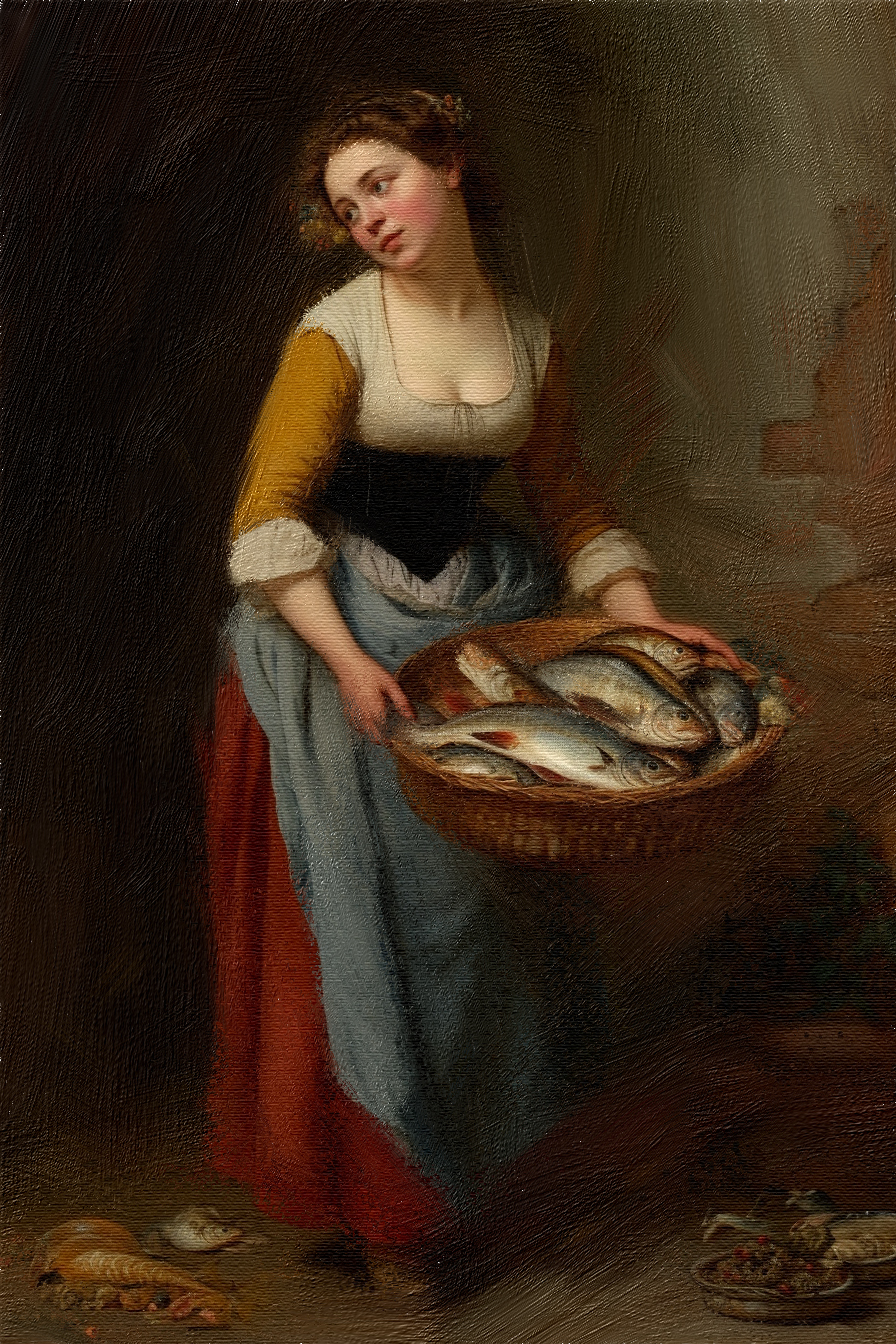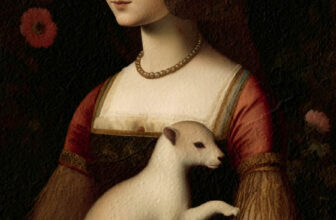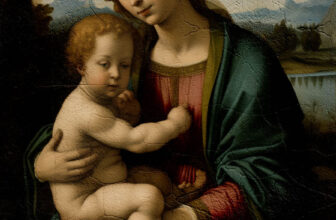
Original Artwork Digital Fine Art Ai
Woman Selling Fish Renaissance Digital Art
In the rich tapestry of Renaissance art, amidst the grandeur of cathedrals, the elegance of noble portraits, and the beauty of mythological scenes, there exists a captivating motif that offers a glimpse into the everyday life of common people: the woman selling fish. While Renaissance art is often associated with depictions of religious and mythological themes, the portrayal of ordinary activities and trades, such as fishmongering, reveals the era’s commitment to realism and its celebration of the human experience.
The Renaissance, spanning roughly from the 14th to the 17th century, was a period of profound cultural and artistic transformation in Europe. It witnessed a revival of interest in classical antiquity, a flourishing of humanism, and advancements in science, exploration, and commerce. Against this backdrop of societal change, artists sought to capture the world around them with newfound attention to detail and perspective.
One of the recurring motifs in Renaissance art is the portrayal of market scenes, where vendors and customers engage in the bustling commerce of daily life. Among these scenes, the woman selling fish emerges as a particularly intriguing subject. Often depicted in outdoor markets or bustling squares, she stands behind a wooden stall adorned with an assortment of freshly caught fish, her face weathered by years of toil, yet bearing an expression of quiet dignity and resilience.
The significance of the woman selling fish in Renaissance art lies not only in her representation as a humble tradeswoman but also in the deeper symbolism that she embodies. In a society where gender roles were strictly defined, the portrayal of a woman engaged in commerce challenges traditional notions of female domesticity and underscores the importance of women in sustaining the economic life of their communities.
Moreover, the woman selling fish serves as a reminder of the interconnectedness of human existence and the rhythms of nature. In an era before refrigeration and modern transportation, access to fresh food was dependent on the cycles of the seasons and the bounty of the natural world. The fishmonger, with her offering of freshly caught seafood, symbolizes the essential role of agriculture, fishing, and trade in sustaining life and livelihoods.
One of the most famous depictions of the woman selling fish in Renaissance art is found in the works of the Flemish painter Pieter Bruegel the Elder. Bruegel, known for his detailed and lively scenes of peasant life, often included fishmongers among the various characters populating his compositions. In paintings such as “The Fish Market” and “The Fight Between Carnival and Lent,” Bruegel captures the vibrant atmosphere of the marketplace, where merchants haggle over prices, children play amidst the stalls, and shoppers peruse the day’s offerings.
In addition to Bruegel, other renowned Renaissance artists such as Caravaggio, Diego Velázquez, and Joachim Beuckelaer also depicted scenes of fishmongers in their works, each bringing their own unique style and perspective to the subject. Whether rendered with meticulous attention to detail or imbued with a sense of drama and dynamism, these paintings offer a window into the everyday realities of Renaissance life.
Beyond its artistic and aesthetic appeal, the depiction of the woman selling fish in Renaissance art also raises questions about social class, economic inequality, and the human condition. While the fishmonger may occupy a humble station in life, her presence in the marketplace underscores the vital role of labor and commerce in sustaining the social order. Moreover, her depiction as a figure of strength and resilience challenges prevailing stereotypes of women as passive and subordinate.
In recent years, scholars and art historians have increasingly turned their attention to the portrayal of women in Renaissance art, seeking to uncover the hidden narratives and subtexts that lie beneath the surface. By examining the representation of the woman selling fish through a feminist lens, researchers have shed light on the ways in which gender, class, and power intersect in the visual culture of the Renaissance.
The woman selling fish in Renaissance art is a potent symbol of the complexities and contradictions of the human experience. Through her portrayal, artists captured not only the vibrancy of everyday life but also the underlying tensions and dynamics that shaped Renaissance society. In celebrating the dignity and resilience of ordinary people, these paintings remind us of the enduring power of art to illuminate the past and inspire the present.






